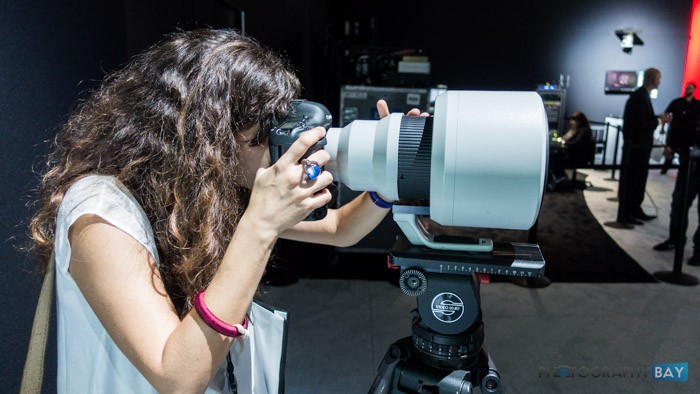There are two objects: one is a semi-working prototype that I presume to have actual optics inside to demonstrate the imaging performance (this is the one that's mounted to a camera). The other is a cosmetic prototype that shows how the lens might look in final production form. I would bet that neither lens has a functioning autofocus assembly. The one with optics seems to only have a manual focusing ring.
The use of BR and DO technology in a single lens would permit this significant reduction in length, since both technologies are able to refract blue wavelengths more than red wavelengths. As to whether it would still use fluorite, I don't know. BR could very well be a replacement for fluorite in the long run.
Bear in mind, however, that DO technology still has yet to rival non-DO equivalents in terms of imaging resolution and rendition of bokeh. Traditional glass still has a small advantage, and with the use of teleconverters, this advantage becomes more apparent.
The use of BR and DO technology in a single lens would permit this significant reduction in length, since both technologies are able to refract blue wavelengths more than red wavelengths. As to whether it would still use fluorite, I don't know. BR could very well be a replacement for fluorite in the long run.
Bear in mind, however, that DO technology still has yet to rival non-DO equivalents in terms of imaging resolution and rendition of bokeh. Traditional glass still has a small advantage, and with the use of teleconverters, this advantage becomes more apparent.
Upvote
0


